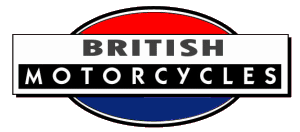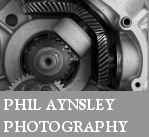


H.R.D. Motors, Ltd., Heath Town, Wolverhampton. HRD were motorcycles produced from 1924 to 1928 by Howard Raymond Davies, who used his initials for his own make. The design was by E. J. Massey of Wolverhampton.
Before the Great War, Howard Davies was a famous rider who achieved some success in the IOM Senior TT. He flew during the War and was mistakenly reported as having been shot down and killed. He went on to ride for AJS in the early 1920s and was successful in the TT in 1920 and 1921.
An excerpt of a report on the 1924 Motor Cycle Show reads:
The design of the frame is one point, and that of the rear mudguards, which are hinged and quickly detachable, is another. A saddle tank is fitted with a capacity of two gallons. The oil tank is separate, and is mounted on the down tube. The foot rests are adjustable, and so also are the handle bars, which are designed to incorporate the lamp bracket."
HRD Motors Ltd was a British motorcycle manufacturer of the 1920s.
It was founded by Howard Raymond Davies. He had worked in motorcycling, and done some racing, enjoying some success in the mid-twenties, but often not finishing due to unreliability. This inspired him to build a reliable performance motorcycle himself. His company used the advertising slogan "Built by a rider". There were others who also aimed at a similar market, like George Brough of Brough Superior motorcycles.
After World War I many motorcycle makers assembled their machines from engines and other major components sourced from different manufacturers. Davies wanted to build a superior motorcycle from the best components available, and worked his way toward making it possible.
Motorcycles were produced from 1924 to 1928, but the undercapitalised company, even though it built a reputation for performance, struggled to survive, and was ulimately sold to OK-Supreme, who then sold the name and goodwill to Philip C. Vincent. The name was then incorporated into a new company, Vincent-HRD.
In 1924, with E. J. Massey, the first HRD motorcycles were built. Motors were sourced from J. A. Prestwich Industries (JAP), close ratio gearboxes from Burman, forks from Druid or Webb, chains from Hans Renolds Ltd, oil pumps from Pilgrim, and carburettors from Binks. The bikes were aimed at the more affluent among the mechanically minded, with sporting performance and quality components.
In 1925 Davies rode his own motorcycles at the Isle Of Man TT, coming second in the Junior and winning the Senior. This brought in orders, but while things seemed successful the firm was in fact losing money. The first premises were too small, so they had to enlarge, but were undercapitalised. There was always a waiting list, but only small numbers were produced. In September H. le Vack set a speed record of 104.41 mph on an HRD at Brooklands.
In 1926 the opposition at the TT were faster, and the best placing for HRD was a fifth. The model range was broadened, but production still failed to meet demand. A general strike inflicted more financial damage.
In 1927 Freddie Dixon took first place in the Junior TT, and sixth in the Senior for HRD. Despite this victory, the financial situation grew worse.
Finally, in January 1928, the company went into voluntary liquidation. It was bought by Ernest Humphries, of OK-Supreme Motors and he decided to sell the name, jigs, tools and patterns. These were promptly bought for £500 by Philip C Vincent, and the result was Vincent-HRD.
Sources: Graces Guide, Motor Sport Magazine
If you have further information or a query related to this page, please contact us